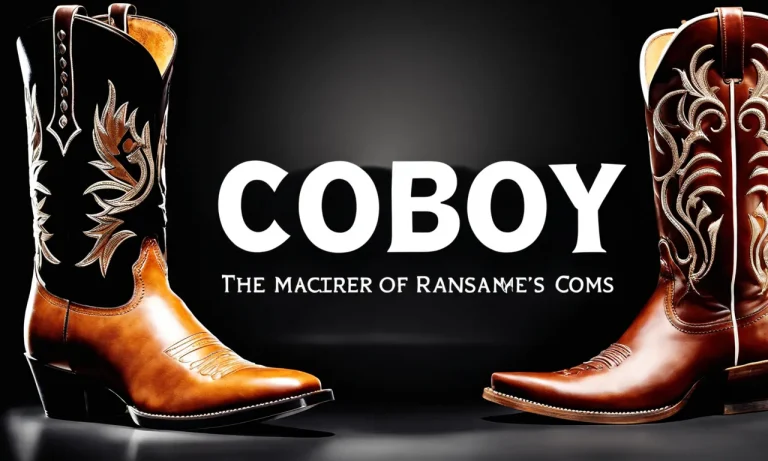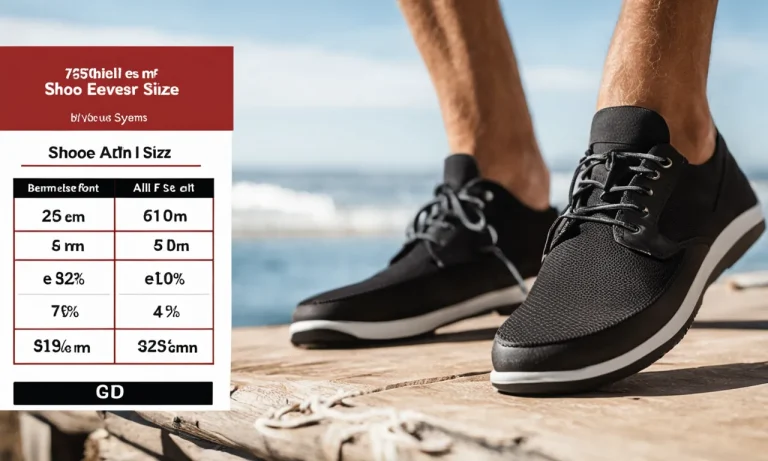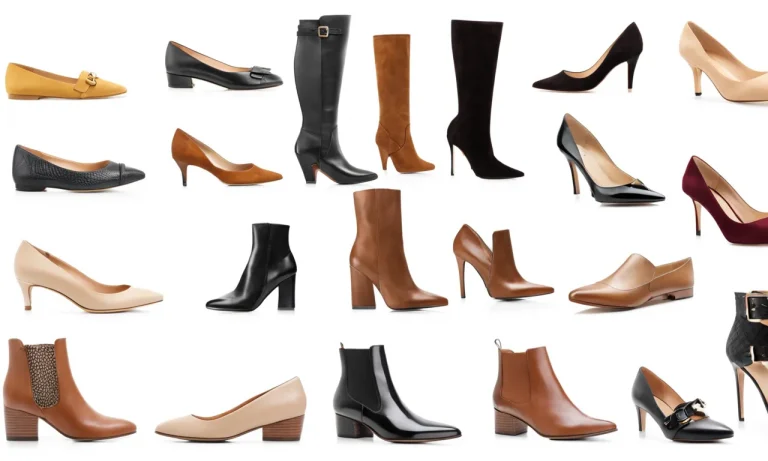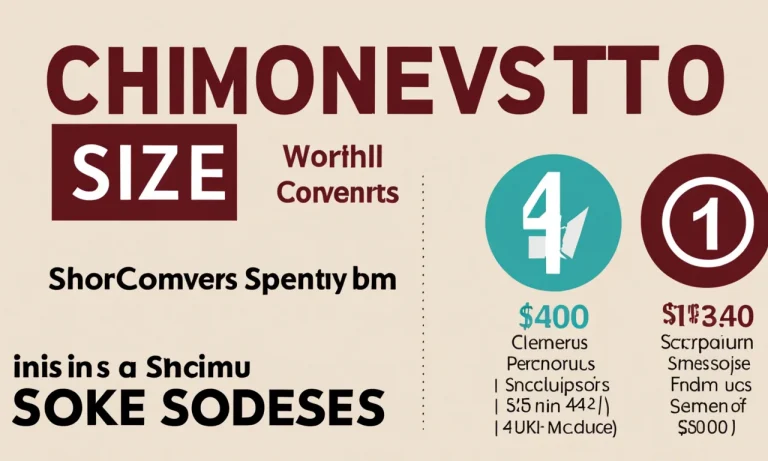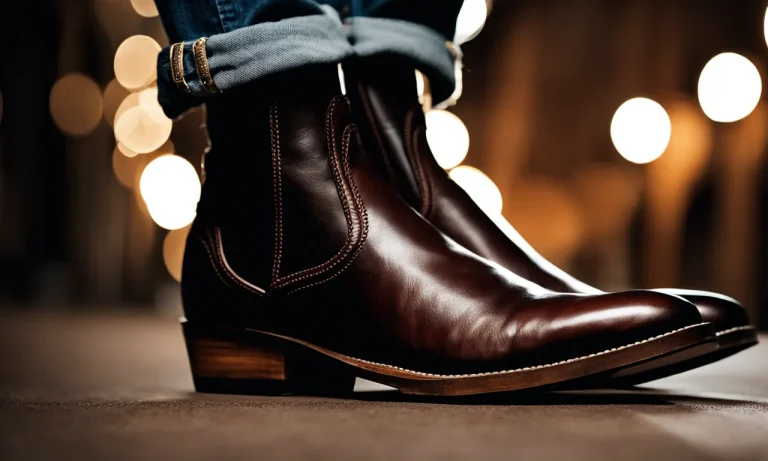The socioeconomic status you’re born into has an enormous impact on the opportunities and comforts available to you in life. This was illustrated beautifully in a metaphor about boots coined by author Terry Pratchett in his Discworld series.
The metaphor, known as Samuel Vimes’ ‘Boots’ theory, uses boots as a symbol for how being poor is expensive and prevents upward mobility.
Samuel Vimes realized during his career advancement from peasant to commander that cheap boots fall apart quickly, forcing the poor to constantly replace them at great expense. Meanwhile, the rich can afford high-quality boots that last a lifetime.
We’ll explore the nuances of this theory and its application to real-world inequality over the course of this approximately 3000 word article.
Introducing the Discworld Series and Samuel Vimes
The Discworld series is a beloved collection of fantasy novels written by the late Sir Terry Pratchett. Set in a flat world balanced on the backs of four elephants, who in turn stand on the back of a giant turtle, Discworld is a rich and vibrant universe filled with intricate characters and satirical commentary on various aspects of our own world.
One of the most beloved characters in the Discworld series is Commander Sir Samuel Vimes of the Ankh-Morpork City Watch. Vimes serves as the protagonist in several novels, and his character embodies many of the values and themes explored in the series.
The Discworld fantasy universe
Discworld is a fantastical world that is both familiar and absurd at the same time. It is a place where magic is real, and gods and supernatural creatures roam freely. However, it is also a world that mirrors our own, with its own political and social issues.
Through his witty and insightful writing, Pratchett uses the Discworld universe to explore and critique various aspects of our society.
The Discworld series consists of over 40 novels, each of which can be read as a standalone story or as part of a larger narrative. Pratchett’s unique blend of fantasy, humor, and social commentary has earned him a dedicated fan base and critical acclaim.
Samuel Vimes background and career
Commander Sir Samuel Vimes is a central character in the Discworld series, and his journey is followed closely throughout several novels. Vimes starts his career as a lowly beat cop on the mean streets of Ankh-Morpork, but through his determination and sense of justice, he rises through the ranks to become the Commander of the Ankh-Morpork City Watch.
Vimes is known for his no-nonsense attitude and his unwavering commitment to upholding the law. Despite the challenges he faces, he remains a beacon of integrity in a corrupt and chaotic world. His character arc explores themes of class, power, and the struggle against injustice.
Throughout the series, Vimes is often faced with moral dilemmas and complex situations that test his resolve. His character development is captivating and relatable, making him a fan-favorite among readers.
To learn more about the Discworld series and Samuel Vimes, visit https://www.terrypratchettbooks.com/.
The Origin of the Theory in Men at Arms
The Samuel Vimes ‘Boots’ Theory of Socioeconomic Unfairness originates from the famous Discworld novel, “Men at Arms” written by Terry Pratchett. In this book, the character Samuel Vimes, a captain in the Ankh-Morpork City Watch, muses about the nature of wealth and inequality.
Vimes, known for his practicality and no-nonsense attitude, develops the theory while contemplating the cost of boots. He realizes that a rich person may spend a significant amount of money on a single pair of high-quality boots that can last for years, whereas a poor person may need to buy cheap boots that wear out quickly and require frequent replacement.
This observation leads Vimes to conclude that the rich actually spend less on boots over time, despite paying more upfront. The poor, on the other hand, end up spending more in the long run due to the constant need for replacement.
This concept extends beyond boots and can be applied to many aspects of life where the poor end up paying more due to their limited resources.
The Theory in Practice
The Samuel Vimes ‘Boots’ Theory of Socioeconomic Unfairness highlights the cyclical nature of poverty and how it perpetuates itself. When someone is living in poverty, they often cannot afford to invest in high-quality items that would last longer and save them money in the long run.
This creates a never-ending cycle of financial struggle, where the poor are consistently forced to make short-term, cheaper choices that end up costing them more over time.
For example, someone living in poverty may buy cheap, unhealthy food because it is more affordable than fresh produce. However, this can lead to health problems down the line, resulting in costly medical bills.
Similarly, someone in a low-income neighborhood may have to rely on public transportation that is often unreliable and time-consuming, leading to missed job opportunities and limited upward mobility.
So, how can this theory be addressed and mitigated? The first step in addressing the Samuel Vimes ‘Boots’ Theory of Socioeconomic Unfairness is to recognize the structural inequalities that contribute to it. Governments and policymakers can work towards providing equal access to quality education, healthcare, and infrastructure to break the cycle of poverty. Improving public transportation, for instance, can help individuals in low-income areas access better job opportunities and improve their financial situation. Additionally, promoting financial literacy and providing resources for budgeting and saving can empower individuals to make informed decisions and break free from the cycle of poverty. By teaching people how to manage their money effectively, they can make long-term investments that save them money in the future. The Samuel Vimes ‘Boots’ Theory of Socioeconomic Unfairness is a concept that highlights the inherent disparities between the rich and the poor in society. It illustrates how financial inequality perpetuates itself and keeps the less fortunate from escaping poverty. The theory is based on the idea that the poor are forced to spend more money on basic necessities, such as boots, which ultimately traps them in a cycle of poverty. According to the boots theory, individuals with limited financial means often have no choice but to purchase cheaper boots. While these boots may initially seem like a more affordable option, they tend to wear out quickly and require frequent replacement. The constant need for new boots becomes a financial burden for those who can least afford it, leaving them with fewer resources to invest in other areas of their lives. This phenomenon can be seen in various aspects of life, such as clothing, electronics, and household items. The poor are often forced to buy low-quality products that need frequent repairs or replacements, ultimately costing them more in the long run. In contrast, individuals with higher socioeconomic status can afford to invest in more expensive, high-quality boots that last longer. These boots may initially come with a higher price tag, but their durability ensures that they don’t need to be replaced as frequently. As a result, the wealthy can allocate their resources towards other endeavors, such as education, investments, or leisure activities. This principle can be applied to various areas of life, demonstrating how those with financial means can make long-term investments that yield greater benefits over time. The boots theory ultimately highlights the vicious cycle of poverty. When the poor are constantly burdened by the need to replace cheap boots, they are unable to save money or invest in their future. This perpetuates their economic disadvantage and makes it difficult for them to escape poverty. On the other hand, the wealthy can afford to purchase expensive boots that last longer, allowing them to maintain their wealth and even accumulate more. This creates a widening gap between the rich and the poor, further exacerbating socioeconomic inequality. It’s important to note that the boots theory is a metaphor for a broader issue of systemic socioeconomic inequality. It serves as a reminder that financial disadvantages can often keep people trapped in a cycle of poverty, making it difficult for them to break free and improve their circumstances. To learn more about socioeconomic inequality and its impact on society, you can visit World Bank or Oxfam International. One area where the Samuel Vimes ‘Boots’ Theory of Socioeconomic Unfairness is evident is in housing costs. As property prices continue to rise, it becomes increasingly difficult for individuals from lower-income backgrounds to afford decent housing. This leads to a cycle of inequality, where those who can afford better housing have access to better neighborhoods, schools, and resources, while others are left struggling to make ends meet. According to a report by HUD, the average rental cost has increased by 20% in the past decade, making it even more challenging for individuals to find affordable housing. Another example of the Boots Theory in action can be seen in the realm of appliances and electronics. While technology has become an integral part of our daily lives, not everyone has access to the latest gadgets and devices. Those who can afford to buy the newest smartphones, laptops, or gaming consoles have a clear advantage over those who cannot. This disparity in access to technology further exacerbates socio-economic inequality. According to Pew Research Center, 16% of Americans do not own a smartphone, and 10% do not have access to high-speed internet, limiting their opportunities in an increasingly digital world. Transportation is another area where the Boots Theory can be observed. Owning a car, for instance, provides individuals with greater mobility and access to job opportunities. However, not everyone can afford the costs associated with owning a vehicle, such as purchasing, fuel, insurance, and maintenance. This lack of access to reliable transportation can make it challenging for individuals from lower-income backgrounds to commute to work or access essential services. According to the Bureau of Labor Statistics, transportation expenses accounted for an average of 15% of total household expenditures in the United States in 2020, putting a strain on individuals with limited financial resources. The Boots Theory also applies to healthcare and insurance. Quality healthcare and insurance coverage are crucial for maintaining good health and well-being. However, the cost of healthcare and insurance can be prohibitive for many individuals, especially those with lower incomes. This lack of access to affordable healthcare can lead to disparities in health outcomes, with wealthier individuals having better access to medical care and treatments. According to the Kaiser Family Foundation, 10.2% of the non-elderly population in the United States was uninsured in 2019, highlighting the ongoing issue of limited access to healthcare for many individuals. Education is often touted as a pathway to upward mobility, but the costs associated with obtaining a quality education can create significant barriers for individuals from disadvantaged backgrounds. From tuition fees to textbooks and other educational resources, the expenses can quickly add up. This makes it harder for individuals with limited financial means to access higher education and gain the necessary skills for better job prospects. According to a report by NCES, the average cost of tuition and fees for public four-year institutions increased by 32% over the past decade, further widening the gap in educational opportunities. The Samuel Vimes ‘Boots’ Theory of Socioeconomic Unfairness helps shed light on the various ways in which socio-economic disparities manifest in our society. Whether it’s housing, appliances, transportation, healthcare, or education, the theory highlights how those with greater financial means have distinct advantages over those who struggle to make ends meet. By recognizing these inequalities, we can work towards creating a more equitable society where everyone has equal opportunities to thrive. One of the main criticisms of the Samuel Vimes ‘Boots’ Theory is that it assumes that all boots are of equal quality. Critics argue that this oversimplifies the issue, as there are often significant differences in durability and comfort between boots of different price ranges. While it is true that some inexpensive boots may wear out quickly, it is also possible to find high-quality boots at affordable prices. Furthermore, the theory fails to consider the long-term cost-effectiveness of investing in a more expensive pair of boots. While they may require a larger initial investment, well-made boots can often last for years, saving money in the long run. Another counterargument to the Samuel Vimes ‘Boots’ Theory is that it overlooks the opportunities for bargain hunting. Critics argue that with careful research and patience, it is possible to find high-quality boots at discounted prices. They point to sales, clearance items, and second-hand markets as potential sources of affordable footwear. Additionally, online shopping has made it easier than ever to compare prices and find the best deals. Websites like RetailMeNot and Slickdeals offer discounts and coupon codes that can further reduce the cost of boots. The Samuel Vimes ‘Boots’ Theory assumes that individuals have limited access to philanthropy and social services, which critics argue is not always the case. Many communities have organizations and programs in place to help individuals in need, including providing assistance with basic necessities like clothing. Charitable organizations, such as Goodwill and Salvation Army, offer affordable options for those in need of boots and other essential items. Additionally, government programs like welfare and food stamps can help alleviate financial burdens, allowing individuals to allocate more of their income towards higher-quality boots. A counterargument to the Samuel Vimes ‘Boots’ Theory is that it fails to recognize the role of individual choice and spending habits. Critics argue that personal financial decisions, such as prioritizing luxury items or unnecessary expenses, can contribute to socioeconomic unfairness. While it is true that some individuals may be limited in their choices due to financial constraints, others may prioritize different aspects of their lives and choose to spend less on certain items, including boots. It is important to consider the individual circumstances and choices that contribute to socioeconomic disparities. The Samuel Vimes ‘Boots’ Theory of Socioeconomic Unfairness highlights the impact of wealth and poverty on social mobility and inequality. This theory, coined by acclaimed author Sir Terry Pratchett, provides valuable insights into the systemic barriers that hinder progress for those born into poverty. One key aspect of the ‘Boots’ Theory is the advantage that wealth brings in terms of access to investments and capital. Wealthy individuals have the financial means to invest in businesses, stocks, and properties, which can generate further wealth and opportunities. This ability to accumulate assets and generate passive income creates a cycle of wealth that is difficult to break for those without the initial financial resources. As a result, the gap between the rich and the poor continues to widen, perpetuating social inequality. Contrary to the common misconception that poverty is solely a lack of money, the ‘Boots’ Theory emphasizes the additional costs that the poor have to bear. From higher interest rates on loans to limited access to quality education and healthcare, individuals with lower socioeconomic status face numerous obstacles that hinder their social mobility. These added burdens make it even harder for the poor to escape the cycle of poverty, creating a significant barrier to achieving equality of opportunity. The ‘Boots’ Theory also underscores how early advantages compound over time, further exacerbating social inequality. Children from affluent backgrounds often have access to better education, healthcare, and opportunities for personal development. These early advantages provide them with a head start in life, setting them on a trajectory for future success. In contrast, children from disadvantaged backgrounds face limited resources and opportunities, making it increasingly difficult for them to catch up as they grow older. This perpetuates a cycle where the rich get richer, while the poor struggle to break free from the chains of poverty. Addressing the issues highlighted by the ‘Boots’ Theory requires comprehensive efforts to promote social mobility and reduce inequality. It involves providing equitable access to quality education, healthcare, and financial resources for all individuals, regardless of their socioeconomic background. By leveling the playing field and creating a society that values equal opportunity, we can strive towards a more just and inclusive future. While simplistic on the surface, Samuel Vimes’ Boots theory elegantly illustrates how small socioeconomic advantages accrue over a lifetime to create vastly different outcomes. The theory’s metaphor of low-quality boots forcing repeated purchases for the poor poses important questions about the real costs of poverty. With creative policy solutions, we may be able to address the systemic imbalances that perpetuate inequality across generations.The Core Principle of the Boots Theory
Cheaper boots must be constantly replaced
Expensive boots last much longer
The poor stay poor, the rich maintain wealth
Examples of the Theory in the Real World
Housing costs
Appliances and electronics
Vehicles and transportation
Health care and insurance
Education costs
Criticisms and Counterarguments
Assumptions about boot quality
Opportunities for bargain hunting
Availability of philanthropy and social services
Individual choice and spending habits
Impact on Social Mobility and Inequality
Wealth gives access to investments and capital
Poverty imposes additional costs on the poor
Early advantages compound over time
Conclusion

